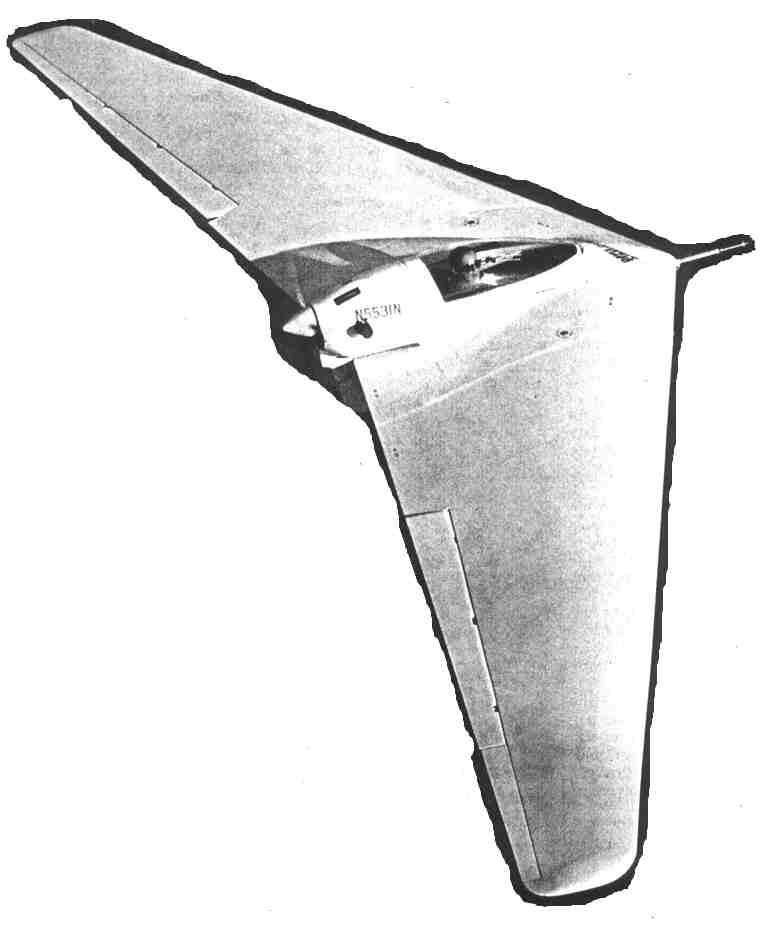
Gilbert Davis' friendship with Joe Rosales, comments which Jack Northrop made to him ("Well, we'll leave that to a younger man" in reference to further development of the flying wing), and Davis' meeting Bill Lear in Reno in 1977, all convinced him that the flying wing concept offered a real opportunity, and that the time was right to bring it into the realm of general aviation.
The Davis Alpha test aircraft has proved that Jack Northrop was right. Eager to prove his design and his dream, on June 10, 1986, Davis rolled out his design, the Alpha Flying Wing. This would be an eventful day. After years of testing, modifying, molding and fabrication, the aircraft rolled to the end of the runway, ready for high-speed taxi testing. Flight testing soon followed on that day with the nose and then main gear gently clearing the runway. After more than 30 minutes of flight, the craft touch lightly down and taxied back to the hanger. Davis had proven once again that the all-wing design is both stable and flyable.
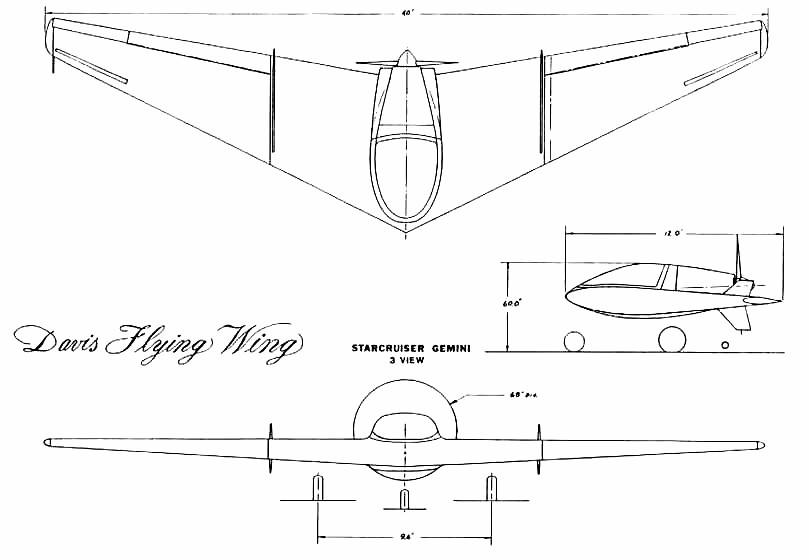
This design can carry as many as five people, three side-by-side in the cabin and two prone in the inboard section of the wing. With two people, it can carry 90 gallons of fuel and more than 1,000 pounds of baggage. With a lighter baggage loads, you can build in 280 gallons of tanks and fly two people over 6,000 miles (ed. - that is the figure in the article). The prone positions also made it a good aircraft for flying camping trips since it becomes your mobile home. The Gemini can be flown with as little as 65 hp with reasonable performance, or with the 150 hp Lycming aircraft engine.
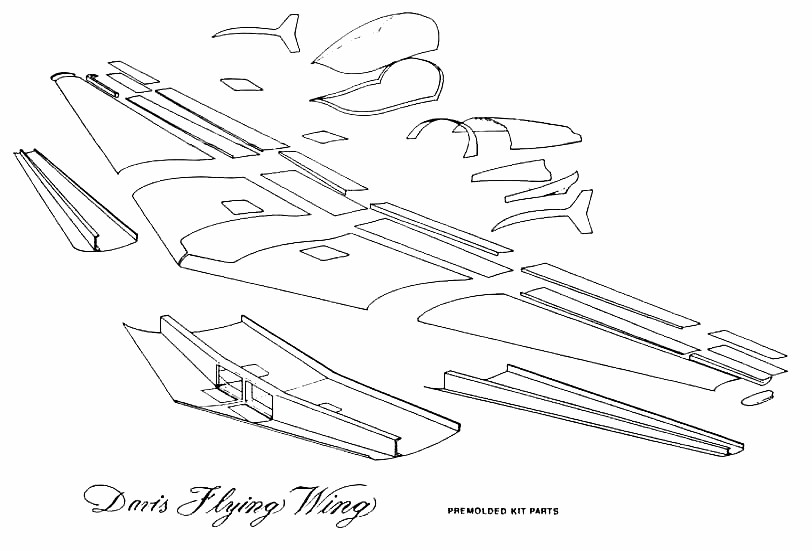
SPECIFICATONS
Five-Place Flying Wing
Wingspan...................................................40
feet
Length........................................................12
feet
Height.........................................................
5 feet
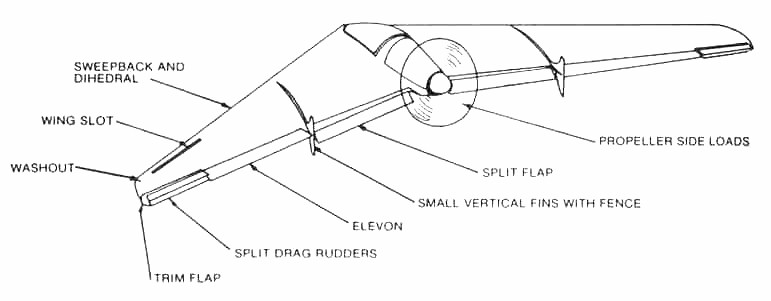
Empty Weight............................................980 pounds
Useful Load.............................................2,020 pounds
Normal Gross Weight...............................2,000 pounds
Maximum Gross Weight...........................3,000 pounds
Fuel Capacity..............................................90 gallons
Engine...............................................Lycoming O-320
Propeller..........................................Wood, fixed pitch
Maximum Speed........................................185 mph
Stall Speed (@ 2000#).................................52 mph
Crusing Speet (@ 75%, 8000')....................172 mph
Rate of Climb (@ 2000#).........................1,300 ft.min
Range (@ 55%)......................................1,800 miles
Service Ceiling......................................24,000 feet
Approx. Construction Time.........................800 hours
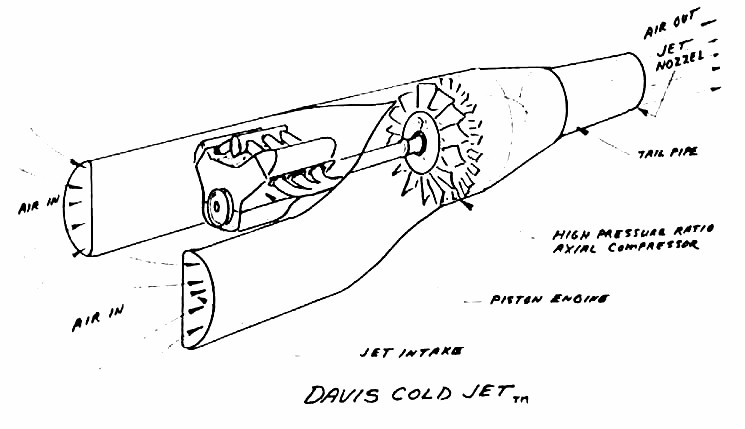
Davis had also been working on a Cold Jet (ducted fan) flying wing design. The diagram at the left shows his concept drawing of the unit that could be used to power a "jet" version of the Gemini Wing. It uses a good-sized V8 driving a high-speed rotor that acheives a pressure ratio of 1.3 to 1. Davis projected this would result in in first-class personal sport jet without all of the problems experienced in the past. The Davis Wing had enough internal volume to allow for the Cold Jets and all of the necessary systems, with room to spare.
(ed. - This item was included since Davis had an actual working version of the Cold Jet that could be installed in the Gemini. The latest we have heard of the Davis Wing's availability didn't include anything about this version. The item below was received from the Davis Wing company several months ago, so we are not sure how valid the information may be. TWITT is in no way endorsing this aircraft, but simply providing the information for each individual to make their own decision regarding obtaining additional information.)